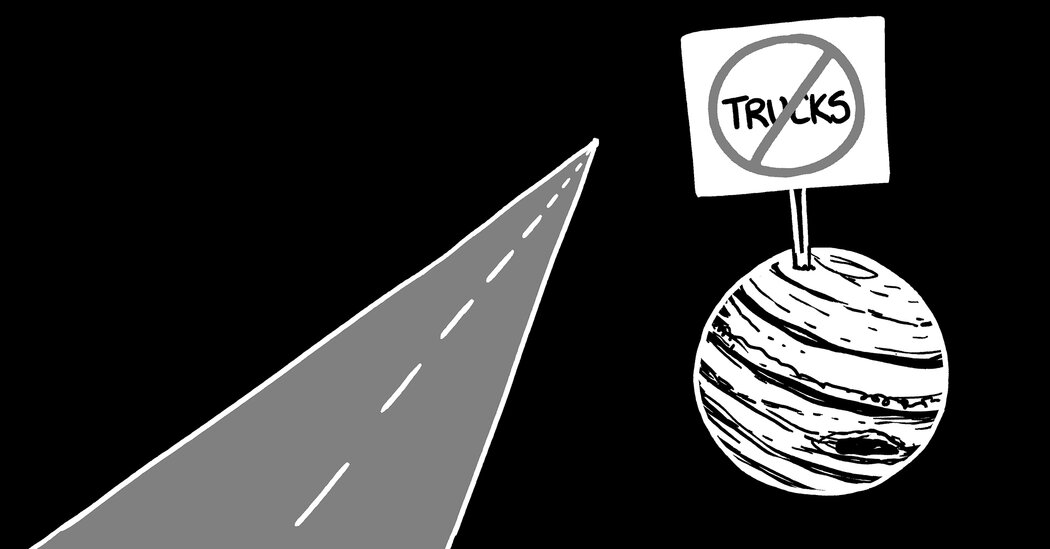The edge of the observable universe is about 270,000,000,000,000,000,000,000 miles away.
If you drive at a steady 65 miles per hour, it will take you 480,000,000,000,000,000 — that’s 4.8 × 10¹⁷ — years to get there, or 35 million times the current age of the universe.
This will be a dangerous road trip. I don’t mean because of space stuff — we’re not worrying about all that — but because driving itself is pretty dangerous. In the United States, the average middle-aged driver suffers about one fatal crash per 100 million miles driven. If someone built a highway out of the solar system, most drivers wouldn’t make it past the asteroid belt. Truck drivers, who are used to driving long distances on highways, have a lower per-mile crash rate than other drivers, but they would still be unlikely to reach Jupiter.
Based on national crash rates, the odds of a driver traveling 46 billion light-years without a crash would be about 1 in 10¹⁰^¹⁵. That’s roughly the same as the probability of a monkey with a typewriter typing out the entire Library of Congress, with no typos, 50 times in a row. You’ll want a self-driving car, or at least one with one of those alarms that warns you if you drift out of your lane.
The trip would take a lot of fuel. At 33 miles per gallon, it would take a moon-size sphere of gasoline to reach the edge of the universe. (As of 2021, NASA’s New Horizons spacecraft has traveled about five billion miles on a budget of about $850 million, which works out to 17 cents per mile — pretty similar to the cost of gas and snacks on a road trip.) You’d run through about 30 quintillion oil changes, requiring a container of engine oil the volume of the Arctic Ocean. (An old piece of advice says that you need to change your oil every 3,000 miles, but most car experts agree that’s a myth — modern gasoline engines can comfortably go two or three times that distance between changes.
You’d also need 10¹⁷ tons of snacks. Hopefully, there are a lot of intergalactic rest areas, or your trunk is going to be pretty full.
It’s going to be a very long drive, and the scenery won’t change much at all. Most of the visible stars will burn out before you even exit the Milky Way galaxy. If you want to try touching a room-temperature star, I suggest planning a route that takes you past Kepler-1606. It’s 2,800 light-years away, so when you drive past it after 30 billion years, it will have cooled to a comfortable room…
Click Here to Read the Full Original Article at NYT > Travel…
